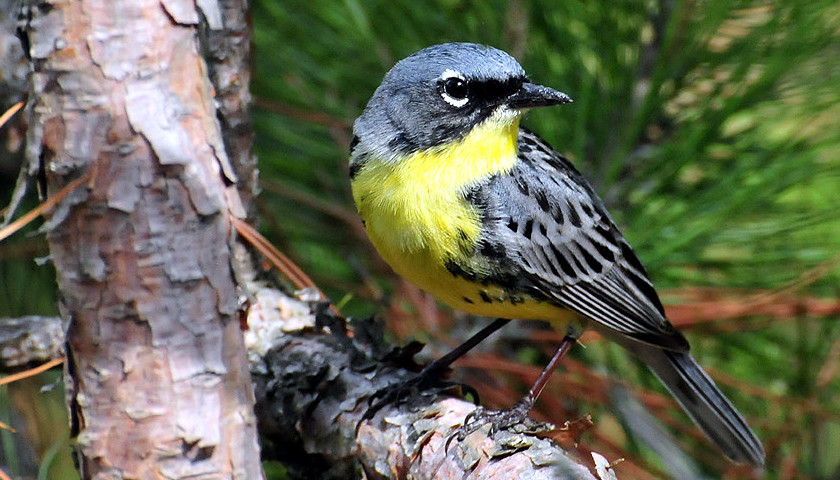A Michigan songbird that used to be on brink of extinction is now thriving, the Michigan Department of Natural Resources announced earlier this week.
The Kirtland’s warbler — which is found in Michigan, Wisconsin and Ontario, and winters in the Bahamas — was one of the first species in the United States to be added to the federal list of endangered and threatened species. Now, it is no longer on the list at all.
“The effort to recover the Kirtland’s warbler is a shining example of what it takes to save imperiled species,” said Margaret Everson, Principal Deputy Director of the Service. “Truly dedicated partners have worked together for decades to recover this songbird. I thank them for their efforts and applaud this historic conservation success.”
Populations dipped to 167 pairs in 1974 and again in 1987. After conservation efforts, populations of the warbler reached more than 1,000 pairs by 2001, expanding into Michigan’s Upper Peninsula, Wisconsin and Ontario. The current population is estimated to be more about 2,300 pairs, which is more than double the goal of the species’ recovery plan.
The Kirtland’s warbler only nests in young jack pine stands. Modern wildfire suppression diminished the warbler’s natural breeding habitat. The warblers were also threatened by brown-headed cowbirds, which lay their eggs in warbler nests. Cowbird hatchlings out-compete warbler hatchlings, causing the warblers to die and the adult warblers to raise the cowbird hatchlings.
Land managers used large-scale timber harvesting and human reforestation, as well as management of cowbird populations to reinvigorate warbler populations.
The sale of jack pine timber is crucial to managing Kirtland’s warbler breeding habitats.
“Collaborative conservation is an effective way of protecting at-risk species and their habitat because it creates a common focus around a shared objective for government agencies, private landowners and the broader conservation community,” said Craig Seaman, senior investment forester of Timberland Investment Resources, which manages working forest investments in Wisconsin. “This is another example of how conservation without conflict can produce positive outcomes and we congratulate all those involved, and especially the U.S. Fish and Wildlife Service for leading the effort.”
– – –
Jordyn Pair is a reporter with Battleground State News and The Michigan Star. Follow her on Twitter at @JordynPair. Email her at [email protected].
Photo “Kirtland’s warbler” by U.S. Fish and Wildlife Service. CC BY 2.0.





